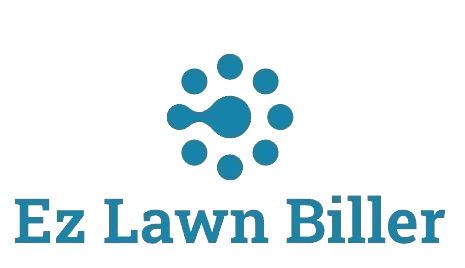Avoiding Performance Analysis Mistakes: Key Insights for Growth
Avoid These Common Analyze Performance Mistakes
Analyzing performance is essential for any business aiming to grow and succeed. However, common mistakes can lead to misinterpretations of data and ultimately hinder progress. This blog post will delve into the frequent pitfalls in performance analysis, offering insights on how to avoid them. By understanding these mistakes and applying best practices, businesses can enhance their strategic decisions, improve operational efficiency, and boost overall performance.
In today’s fast-paced business environment, companies must rely on data-driven decisions. Performance analysis helps identify strengths, weaknesses, opportunities, and threats. Unfortunately, many organizations fall into traps that skew their analysis, leading them to make poor decisions. Understanding these errors is crucial for refining your analytical approach and ensuring that your performance metrics align with your business objectives.
This article will cover several common mistakes in performance analysis, including over-reliance on data, ignoring context, and failing to involve stakeholders in the process. We’ll also discuss practical strategies to avoid these pitfalls and enhance your overall performance measurement practices.
Over-Reliance on Data
One of the most prevalent mistakes in performance analysis is the over-reliance on quantitative data. While metrics and numbers are crucial for informed decision-making, they don’t always tell the full story. For instance, a business may focus solely on revenue growth while neglecting customer satisfaction scores or employee engagement metrics.
Performance analysis should encompass a holistic view of the organization’s health. Relying solely on data can lead to a narrow perspective that misses critical insights. For example, if your lawn care business shows an increase in revenue but receives negative feedback from clients, the data alone can give a misleading impression of success. To mitigate this risk, complement quantitative data with qualitative insights gathered from customer feedback, employee surveys, and market research.
Moreover, it’s vital to question the data sources and methodologies you use. For instance, if you’re using a lawn billing software that aggregates data from various channels, ensure that the data collected is accurate and representative. Inaccurate data can lead to misguided conclusions and strategies that don’t address the root causes of performance issues.
Ignoring Context
Another common mistake in performance analysis is ignoring the context in which data is collected. Analyzing data without considering external factors can lead to incorrect assumptions. For instance, a decrease in sales during a winter season for a lawn service app may seem alarming, but it’s essential to recognize the seasonal nature of the business.
Understanding the contextual factors influencing performance metrics is crucial for accurate analysis. Market conditions, economic trends, and competitor activities can all impact performance. By assessing these external influences, businesses can create more informed strategies that align with current conditions.
For example, if a lawn company experiences a drop in service requests, it could be due to increased competition rather than a decline in service quality. By analyzing market trends and understanding your competitive landscape, you can make adaptive changes to your offerings, such as introducing new lawn care packages that cater to current demands.
Failing to Involve Stakeholders
Performance analysis should not be a solitary endeavor. Engaging stakeholders, including employees, management, and clients, is critical for a comprehensive understanding of performance. Failing to include diverse perspectives can lead to skewed insights and potential blind spots.
Involving team members in performance analysis fosters accountability and encourages collaboration. For example, if your lawn care team is included in discussions about performance metrics, they can share firsthand insights on client feedback and service execution. This collaboration can lead to more effective strategies and a collective commitment to improvement.
Additionally, customer feedback should play a significant role in performance evaluation. Implementing regular surveys or feedback loops can provide valuable insights into client satisfaction and service effectiveness. Analyzing this qualitative data alongside your quantitative metrics creates a more rounded view of your business performance.
Neglecting Continuous Improvement
Performance analysis is not a one-time activity but rather an ongoing process. Many organizations make the mistake of conducting performance reviews sporadically, which can lead to missed opportunities for improvement. Continuous monitoring and analysis allow businesses to identify trends, adapt to changes, and refine strategies over time.
For lawn care businesses, utilizing a lawn service software that supports ongoing performance tracking can be incredibly beneficial. This allows you to monitor service requests, customer satisfaction, and overall operational efficiency in real time. The more frequently you analyze performance data, the more agile your business can become in responding to challenges and capitalizing on opportunities.
Moreover, establishing a culture of continuous improvement encourages employees to contribute to performance enhancement actively. Regular training, feedback sessions, and performance discussions can help create an environment where everyone is engaged in striving for excellence. This approach fosters innovation and ensures that your business remains competitive in a dynamic market.
Lack of Clear KPIs
Key Performance Indicators (KPIs) are essential for guiding performance analysis. Without defined KPIs, businesses can struggle to measure success effectively. A common mistake is either not establishing KPIs at all or creating vague and unmeasurable indicators.
When defining KPIs, it’s vital to ensure they are specific, measurable, achievable, relevant, and time-bound (SMART). For example, instead of stating that you want to “increase customer satisfaction,” set a clear KPI such as “achieve a 90% satisfaction rate in quarterly customer surveys.” This clarity allows for more focused analysis and a better understanding of what success looks like.
Furthermore, reviewing and adjusting KPIs regularly is crucial. As your lawn company grows and market conditions change, your performance indicators may need to be realigned to reflect your current business goals. A lawn company app can help track these metrics in real-time, allowing you to make informed decisions based on accurate data.
Not Leveraging Technology
In today’s digital age, failing to leverage technology can severely hinder performance analysis. Many businesses still rely on manual record-keeping and outdated methods, which can lead to inefficiencies and inaccuracies. Investing in modern service company software can streamline your performance analysis process, making it easier to collect, analyze, and visualize data.
For instance, a lawn service computer program can automate data collection, generate reports, and provide insights in real-time. This allows businesses to focus on interpreting data rather than being bogged down by administrative tasks. Moreover, technology can offer advanced analytics tools that enable predictive modeling, helping you anticipate trends and make proactive decisions.
Implementing a lawn company app can also enhance communication and collaboration among your team. Features such as task assignments, progress tracking, and reporting can improve overall efficiency, enabling your team to work together seamlessly toward common performance goals.
Failing to Act on Insights
Even with accurate analysis, businesses can falter if they fail to act on the insights gained. Gathering data and identifying trends is only beneficial if you implement changes based on your findings. A common mistake is to treat performance analysis as a checkbox task rather than a starting point for improvement.
To ensure that insights lead to actionable strategies, establish a clear plan of action following your performance reviews. For example, if your analysis reveals a decline in service quality, create specific initiatives to address the issue, such as training sessions for your lawn care team or improving your customer feedback process.
Additionally, communicate the findings and the planned actions with your team. This transparency fosters accountability and encourages everyone to contribute to the improvement efforts. By making performance analysis a catalyst for positive change, you can drive your business toward sustained success.
Conclusion
Avoiding common performance analysis mistakes is crucial for any business striving for growth and efficiency. By recognizing the pitfalls of over-reliance on data, ignoring context, and failing to involve stakeholders, organizations can refine their analytical practices and improve decision-making.
Remember, performance analysis is not just about collecting data; it’s about understanding that data in a meaningful context and taking actionable steps to enhance your business performance. Leverage technology, establish clear KPIs, and foster a culture of continuous improvement to ensure that your performance analysis drives impactful results.
As you continue to navigate your business landscape, consider tools like [Lawn Biller Software](https://ezlawnbiller.com/) to optimize your billing process and improve overall efficiency. With the right strategies and insights, your lawn care business can thrive and adapt in an ever-changing market.




